Carl Zeiss Apo Sonnar T* 135 mm f/2.0 ZE/ZF.2
3. Build quality
In the photo below the tested lens is positioned between the Canon EF 100 mm f/2.8L IS USM Macro and the Zeiss Makro Planar 50 mm f/2.0 T*.
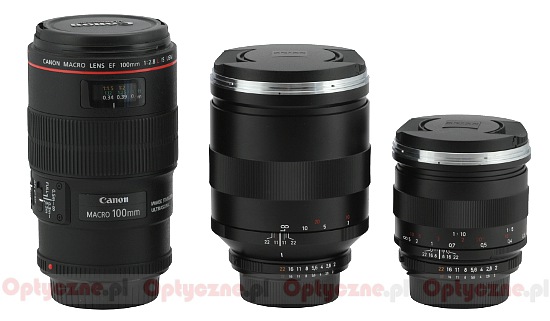 |
Please Support UsIf you enjoy our reviews and articles, and you want us to continue our work please, support our website by donating through PayPal. The funds are going to be used for paying our editorial team, renting servers, and equipping our testing studio; only that way we will be able to continue providing you interesting content for free. |
- - - - - - - - - - - - - - - - - - - - - - - - - - - - - - - - - - - - - - - - - - - - - - - -
The Carl Zeiss Apo Sonnar T* 135 mm f/2.0 ZF.2 is a classic lens in the best sense of the word. Everything is classic here, from the parameters to the high build quality. You won’t find here any shoddy plastics parts – there’s just glass and metal.
The lens starts with a metal mount which surrounds contacts and a rear element, 30 mm in diameter. When the focus is set at infinity the rear element is situated right below the contacts and when you pass to the minimum focus it hides 4 centimeters inside. The surrounding area is nicely blackened and matted; still you can express some reservations concerning one big screw which top wasn’t painted black.
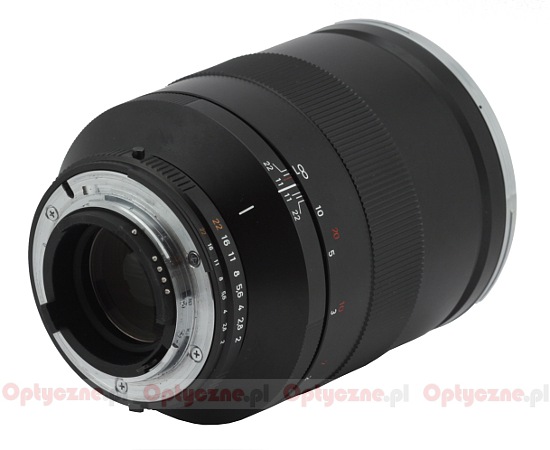 |
If you own a Nikon F mount version, the first element of the proper casing of the lens will be a narrow, ribbed aperture ring. It is less than 1 cm wide and works as it should, moving every 1/2 EV step. Of course if you control the aperture from the camera body level there is 1/3 EV step available. The ring itself can hardly be called comfortable, mainly due to its slight width and the narrow diameter. A person with large fingers can experience some problems with operating it as it is blocked from one side by the body of a camera and on the other side by the tube of the lens which becomes wider very quickly.
When the tube reaches its normal diameter, the first element you see is a depth of field scale with markings at f/22, f/16 and f/11 and a red infinity marking for infrared photography. On the opposite side from the scale there is information that the lens was produced in Japan.
The biggest part of the tube is a focusing ring, almost 6 cm wide. Its centre is occupied by metal ribs under which you find a distance scale, expressed in meters and feet. The ring moves perfectly well – smoothly but with a proper resistance, allowing you very precise settings. Running through the whole distance scale needs a turn through an angle of as much as 270 degrees – a truly impressing value.
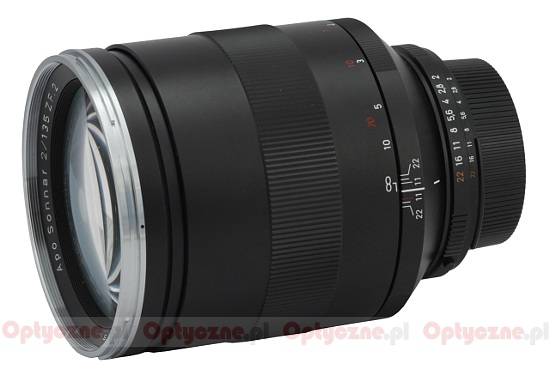 |
The lens ends with a silver mount for a hood which surrounds a non-rotating filter thread, 77 mm in diameter. The filter thread goes round a part of the casing featuring inscriptions with the name, the parameters of the lens and its serial number and a front element, with a diameter of 64 mm.
The lens focuses by moving the whole optical system so when you pass to the minimum focus its physical dimensions increase by over 3 cm. It is a drag but you get a very good minimum focusing distance, amounting to 0.8 of a meter, in return– a better result than that of the Canon or the Nikkor 2/135. Only the Zeiss 1.8/135 with the Sony A mount can boast of a better minimum focus value.
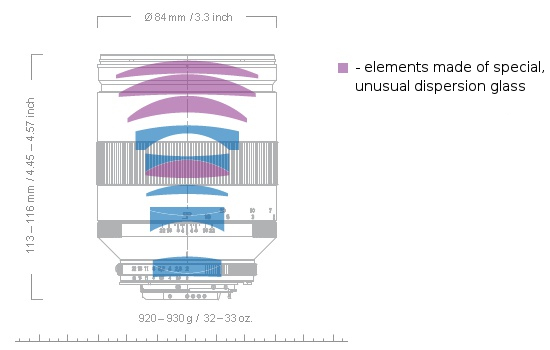 |
The tested lens consists of 11 elements positioned in 8 groups. As much as four elements were made of special, unusual dispersion glass which is supposed to ensure a perfect chromatic aberration correction. Inside you can also find a circular aperture with nine diaphragm blades which can be closed down to a value of f/22. Of course you cannot omit the high quality T* anti-reflection coatings which cover all air-to-glass surfaces.
Buyers get both caps and a hood. Pity that, for such a price, the producer didn’t add any case. The metal body of the lens, painted black, is easy to scratch so a case of a sort would certainly come in handy.
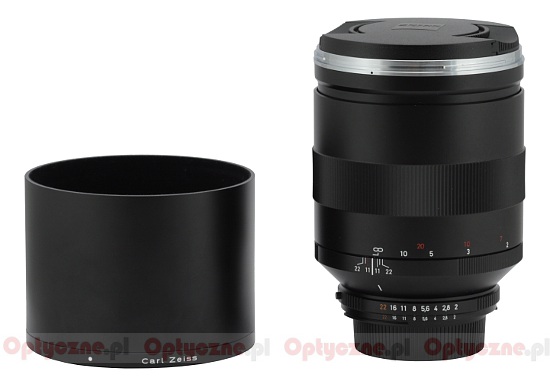 |






